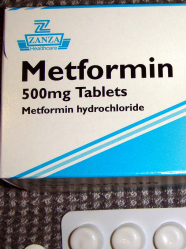Bringing Attention to Prediabetes and the Promise of Metformin
By Kelly Close

Twitter summary: Approving metformin for prediabetes may help the 79 million Americans who are at risk of developing diabetes.
Benjamin Franklin once observed, “An ounce of prevention is worth a pound of cure.” This is perhaps most true with respect to type 2 diabetes, as an estimated 79 million people in the United States – at least a quarter of the population – have prediabetes. If we hope to improve quality of life and reduce healthcare costs for all Americans, it is critical to ensure that as many of those 79 million as possible do not progress to type 2 diabetes. In this age of reduced access to tools, we want to make sure fewer patients than ever are stuck with a diabetes diagnosis, not enough access to healthcare providers, and limited access to blood glucose strips.
The best understanding of prevention (ever!) comes from the Diabetes Prevention Program (DPP), which found that moderate weight loss and exercise can reduce the risk of diabetes by 58%, while early use of the medication metformin may reduce the risk by 38%. While it may not be realistic to expect the same results outside the controlled environment of a clinical trial, those figures still provide significant cause for optimism that type 2 diabetes can indeed be delayed and prevented. Lifestyle change is important for those with prediabetes, and wellness has been the major focus of programs built around the DPP findings, including those of organizations like the YMCA and newer, promising online ventures like Omada Health.
That said, the DPP also found another way for those with prediabetes to substantially reduce their risk: metformin. This drug has revolutionized type 2 diabetes care since its introduction in the 1970s, and it remains the preferred first-line option for those newly diagnosed with diabetes. Metformin has a reputation as an affordable and effective drug – perhaps most important, it has generic status, and is therefore inexpensive. On many insurance plans, patients have no copay at all.
While some people currently take metformin to treat prediabetes, they represent a small minority, since this is technically “off-label,” which means that even if it is cheap, it isn’t prescribed. Why? Many healthcare providers are hesitant to prescribe off-label drugs, in case they get in legal trouble. Unfortunately, people can’t get access to metformin without a prescription.
How do we change this? The only way to is to submit metformin to the FDA to get an indication for prediabetes. Bristol Meyers Squibb is the holder of the original metformin patent, but we imagine that it does not necessarily have plans to submit the DPP trial results to the FDA in order to get approval. It would not make very much profit (if any) at a price of $5/bottle. We estimate that it would cost about $2-$3 million for the FDA submission fee, not to mention countless hours likely required to put together the documentation. Naturally, metformin would still be generic even after a prediabetes indication; even though BMS would stand little chance of making back those millions of dollars, it would have the satisfaction of knowing metformin had helped prevent diabetes in so many patients and improved their quality of life. .
If there is ever an issue that transcends the bottom line, this must surely be it. 79 million Americans – and likely far more than that in the decades to come – may be able to significantly reduce their risk of type 2 diabetes and its complications. Annual diabetes care costs in 2012 were a staggering $245 billion, and care for people with diagnosed diabetes accounts for more than one out of every five healthcare dollars in the US. It is our duty as a society to ensure that people with prediabetes have access to metformin.
Very best,
Kelly Close and the diaTribe team







